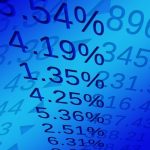
BoJ intervention. The yen shed more than 1% against the dollar to as low as 151.95 yen, the lowest since July 1990 against the dollar. However, it was just a few minutes before 4 PM, and at the London “fix”, when the currency market was closest to the daily close, the currency pair abruptly reversed. However, the yen later strengthened against the dollar and USDJPY settled at 147.26 yen.
Given the low liquidity levels and the fact that the dollar is already under pressure after a report earlier in the Wall Street Journal signaling that the Fed may move to smaller rate hikes after its November policy meeting, Bipan Rai, head of currency strategy at CIBC Capital Markets, said the conditions were ripe for authorities to intervene.
The move in the yen comes after the Bank of Japan conducted unscheduled emergency bond buying operations for the second day in a row on Friday, according to a Reuters report, following 20-year TMBMKJP-20Y yields of 1.099% and 30-year TMBMKJP-20Y yields. The move comes after Japanese core inflation soared to an eight-year high, according to the data released. On an annual basis, Japan’s core consumer price index rose to 3% in September from 2.8% the previous month, according to FactSet data.
Jon Turek, founder and CEO of JST Advisors, said Japan’s rising inflation will increase pressure on the BOJ to compromise its excessively loose monetary policy, but it will be impossible to predict when the central bank will throw the towel.
Chinese intervention. Two sources with direct knowledge of the matter told Reuters that China’s leading state banks sold US dollars in both onshore and offshore markets to support the weakening yuan late Tuesday.
Sources said it is unusual for local branches of China’s major banks to be active in onshore trading during London or New York trading hours, although they normally trade in offshore yuan and move to divert the onshore counterpart.
The offshore yuan has been hitting record lows in recent sessions, reflecting a stronger dollar and concerns over a slowing Chinese economy. The yuan purchase by state banks helped it crawl from a record low of 7.3746 per dollar to 7.3034.
The onshore yuan bounced from a low of 7.31 after state bank actions, wiping out nearly all intraday losses. When trading resumed, it opened at 7.2949 per dollar and last changed hands at 7.2971.
South Korean intervention. South Korean assets rose after the government pledged at least 50 trillion won ($34.8 billion) to support credit markets and eased concerns about rising default risks in key industries, including real estate.
South Korea will expand its “liquidity supply program” to avoid credit crunch in corporate bonds and other short-term money markets, Finance Minister Choo Kyung-ho said in a statement. The move marks one of the biggest rounds of financial support for the markets since the start of the pandemic. Some analysts have warned that more may be needed in the future.
Risks have risen in Korea’s domestic credit market as yields hit the highest in more than a decade after the developer of the Legoland Korea theme park in Gangwon province defaulted on commercial paper late last month. This fueled wider concerns about real estate firms, which were already weakened by rising borrowing costs as the central bank raised interest rates to combat inflation. After the crisis in the sector in China, real estate debts are spreading in Asia.
“The latest government moves will help stabilize market sentiment, but there is an issue with policy consistency at a time when rates are being raised aggressively to tame inflation,” said Heo Pil-Seok, CEO of Midas International Asset Management.
Earlier this month, the Bank of Korea increased its seven-day buyback rate by half a percentage point to a 10-year high of 3%.
The Kospi Index found support on expectations that the loan commitment will offer support to brokerages exposed to commercial paper and builders dependent on developers for business. Among brokers, Meritz Securities gained as much as 10.5%, Kiwoom Securities 9.9% and Samsung Securities Co 5.5%. Construction company Dongbu rose 24.3%, the biggest increase in six years, and its peer DL E&C Co. made the highest climb since February 2021.
What does that mean? Governments around the world have sought to stabilize their currencies and defend their economies against the Fed’s rapid rate hikes that tipped the market in favor of the dollar. Its efforts highlight both the interconnected nature of the global financial system and its vulnerabilities.
The Fed has hiked rates five times this year and is expected to make more moves as inflation remains high in the US. The rate hikes increased the returns available to investors who bought US assets, attracted money to the US, and strengthened the dollar. As the U.S. economy is more firmly grounded than the rest of the world, investors worried about a global downturn are also pouring money into the world’s largest economy, which further strengthens the dollar.
Some of the impact of the Fed’s moves on other regions is economic. A weaker currency means it costs more for a country to import food, energy, and other goods. This adds to local inflation, hurts households and could contribute to a global recession.
But there is another issue that bothers investors and policy makers. Global markets are interconnected, the prices of assets worldwide are interconnected. And so rising US interest rates caused sharp changes in global currencies, bonds and stocks, causing markets to react suddenly and simultaneously.
Kaynak: Tera Yatırım-Enver Erkan
Hibya Haber Ajansı
















